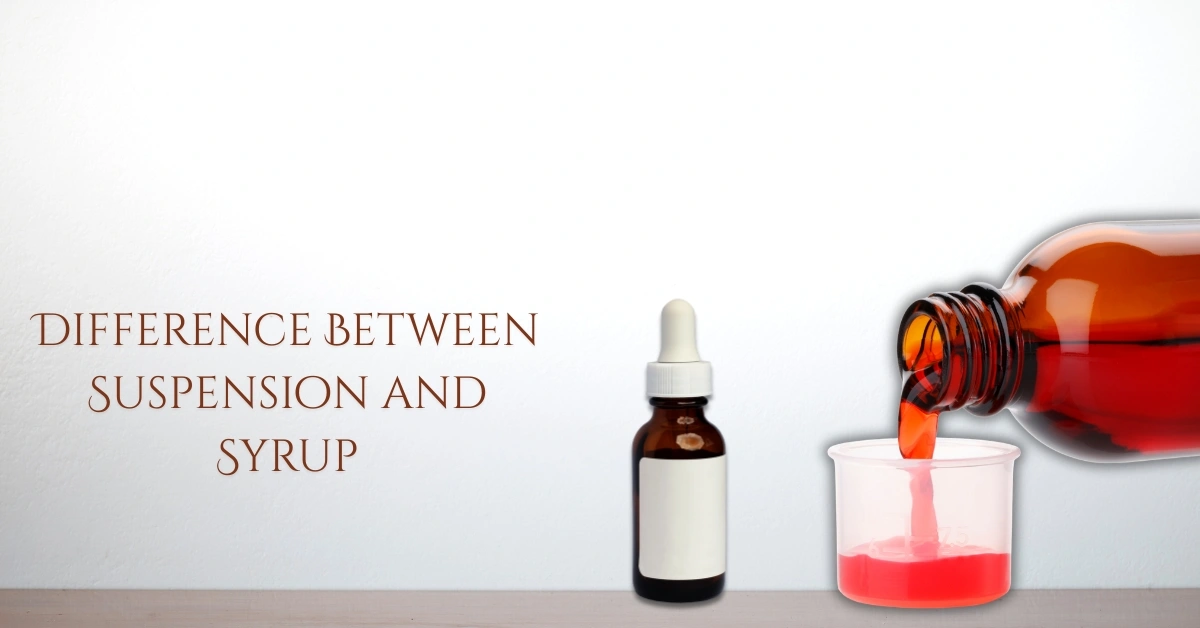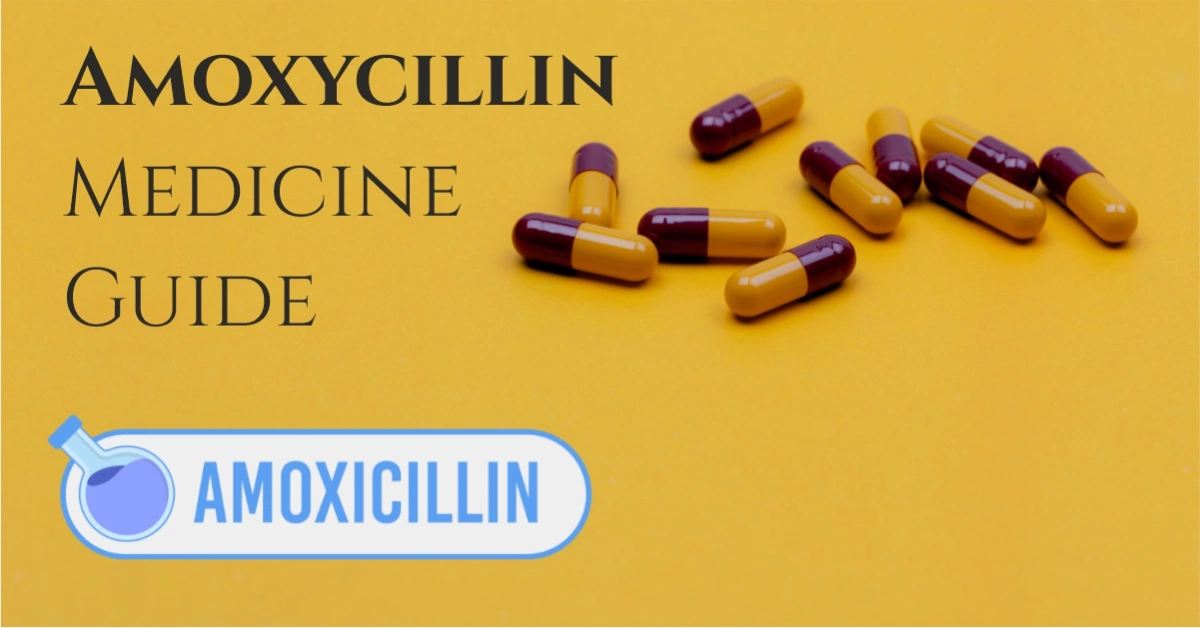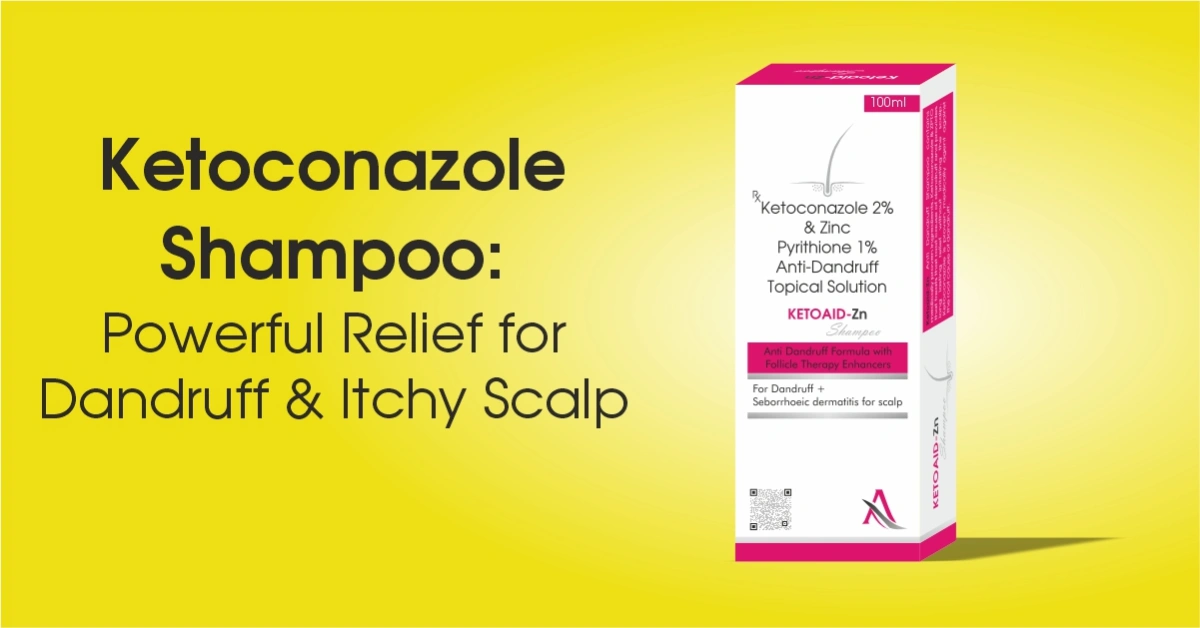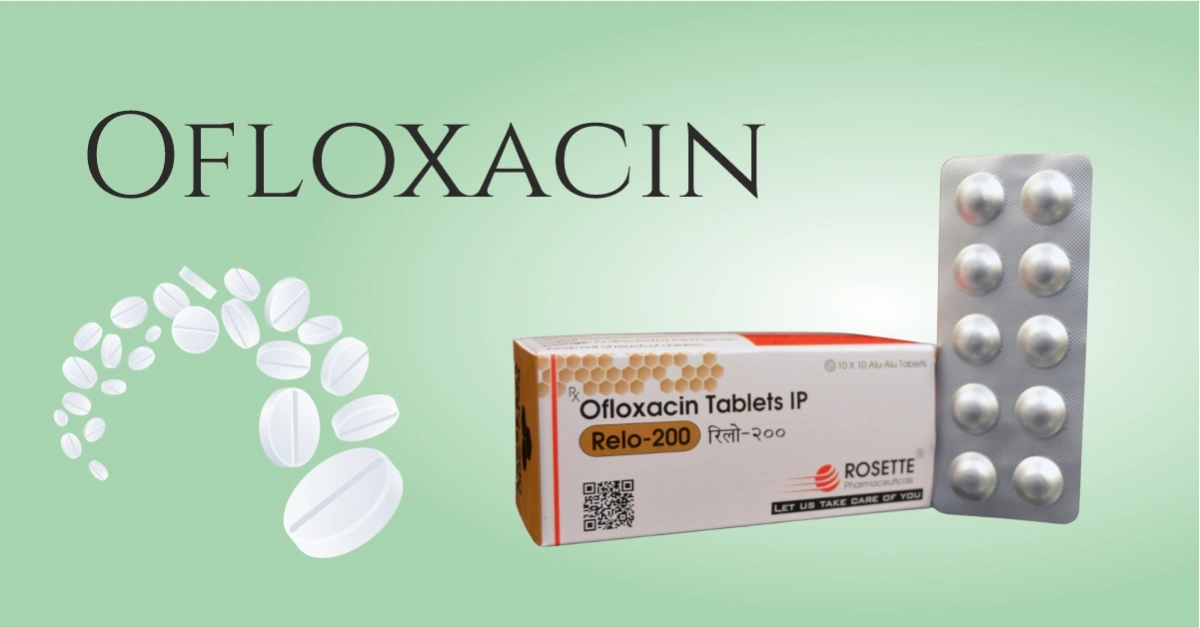In the world of allopathic medicine, two common liquid forms—syrup and suspension—are often prescribed for a wide range of health conditions. Both are taken by mouth, both usually come in bottles, and both are meant to make swallowing easier, especially for children and elderly patients.
Yet, many people get confused between the two. On the surface, they look similar—sweet, flavored liquids often used for cough, fever, pain, or infections. But when you look closely, you’ll find they work in very different ways.
One of the main reasons for this confusion is how both are described by chemists and doctors. In pharmacies, it’s common to hear:
“Take 5 ml of this syrup” — even when the bottle actually contains a suspension. The terms are used interchangeably in casual speech, especially in India, making it hard for patients to know the difference.
The confusion also comes from the lack of visual differences in packaging. Unless someone reads the label carefully or asks the doctor, they may not realize whether they’re taking a syrup (where the medicine is fully dissolved) or a suspension (where medicine particles are only mixed and not dissolved).
For someone managing a child’s fever or an adult’s antibiotic dose, knowing this difference matters. It helps in proper shaking, correct dosing, and even storage. That’s why understanding the basics is more than just good to know—it’s useful in real life.
What Is a Syrup?
A syrup, in pharmacy terms, is a sweet and thick liquid in which the medicine is fully dissolved in a sugar or sugar-free base. It looks smooth, pours easily, and has a uniform texture. There are no visible particles floating in it.
To define syrup in simple words:
It’s a liquid medicine that tastes sweet, flows smoothly, and doesn’t need shaking.
In the pharmacy world, the syrup definition is more technical:
A concentrated aqueous solution of sugar (or substitute) containing one or more dissolved active ingredients.
What’s Inside a Syrup?
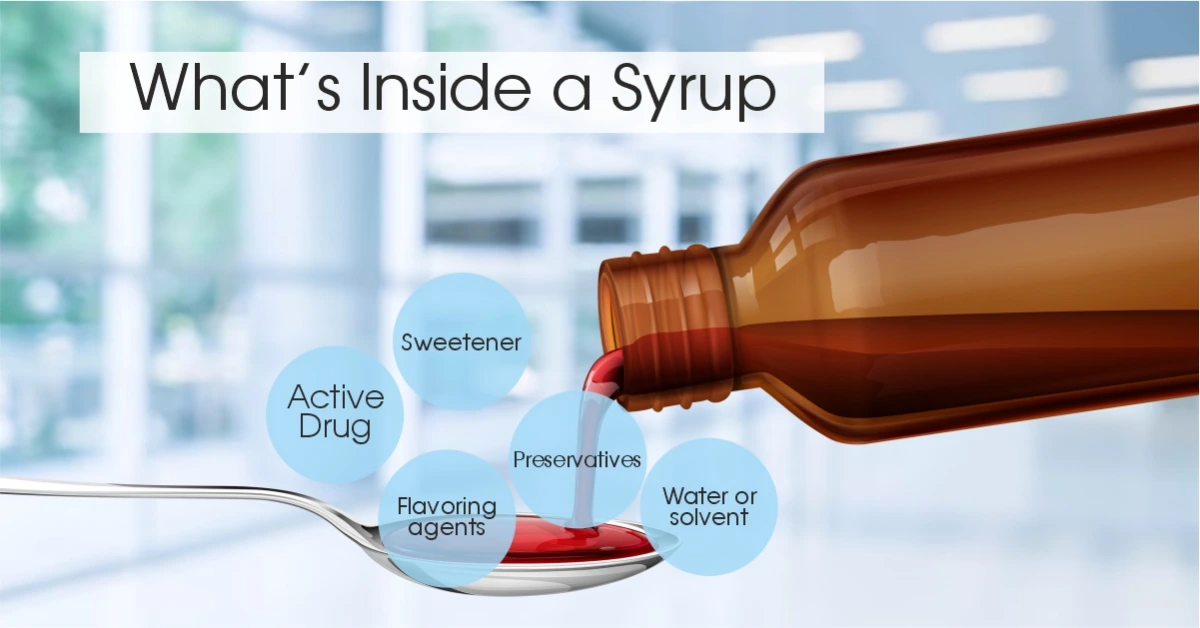
Most syrups have these key ingredients:
- Active drug – the actual medicine (like paracetamol or ambroxol)
- Sweetener – usually sugar, sorbitol, or artificial sweeteners
- Flavoring agents – to improve taste (strawberry, mint, orange, etc.)
- Preservatives – to extend shelf life
- Water or solvent – as the base for mixing
The final product is not only easy to swallow, but also masks the bitter taste of many medicines—especially important in pediatric use.
Types of Syrups You May Come Across
| Type | Description |
|---|---|
| Medicated Syrup | Contains an active pharmaceutical ingredient (API) |
| Flavored Syrup | Used just to mask taste or as a base (e.g., simple syrup in pharmacy compounding) |
| Sugar-Free Syrup | Suitable for diabetic patients or calorie-conscious users |
Common Examples in Daily Use
- Paracetamol Syrup – for fever and mild pain
- Ambroxol or Levocetirizine Syrup – for cough and allergies
- Multivitamin Syrups – to support daily nutrition
These syrups are often used in clinics, hospitals, and homes because they’re easy to measure, pleasant to taste, and suitable for almost all age groups.
What Is a Suspension?
A suspension, in pharmacy, is a liquid medicine where the active drug is not fully dissolved in the liquid. Instead, tiny solid particles of the drug are mixed and suspended evenly in the base. These particles float in the liquid but don’t melt or dissolve completely.
In simple terms:
A suspension is a cloudy liquid medicine that must be shaken before every use because the drug settles at the bottom.
According to the suspension definition in pharmacy, it is:
A coarse dispersion in which the insoluble drug particles are suspended in a liquid medium and need to be redistributed before use.
What Makes a Suspension Different?
- The drug inside is insoluble, so it doesn’t dissolve like in a syrup.
- Over time, the particles settle at the bottom due to gravity.
- That’s why you often see this label: “Shake well before use.”
- Skipping the shake can lead to incorrect dosing, especially in children.
What Does It Look Like?
Unlike syrup, which is clear or evenly colored, a suspension usually appears:
- Cloudy or opaque
- Sometimes gritty when touched or poured
- May leave residue on the measuring spoon if not shaken properly
Examples You May Have Seen
| Suspension Name | Common Use |
|---|---|
| Ropyro-250 Suspension | For fever and mild-to-moderate pain in children |
| Lezet-MT Suspension | For allergic rhinitis, sneezing, and asthma prevention |
| Ropyro-Cold Suspension | For cold, fever, nasal congestion, and allergy symptoms in kids |
| Relo-OR Suspension | For mixed bacterial and protozoal infections with gas relief |
Suspensions are very common in pediatric medicine, where liquid form is needed but the drug is not water-soluble.
Syrup vs Suspension – Key Differences at a Glance
| Basis | Syrup | Suspension |
|---|---|---|
| Solubility | Drug is fully dissolved in the liquid | Drug remains suspended, not dissolved |
| Appearance | Clear or uniformly colored | Cloudy, may look gritty |
| Shake Required | Not required | Must shake before each dose |
| Palatability | Usually sweet and smooth in taste | May feel powdery or slightly chalky |
| Dosage Accuracy | High, as drug is evenly distributed | Can vary if not shaken properly |
| Stability | Generally more stable over time | Can settle quickly; shorter shelf-life once mixed |
| Common Use | Cough, fever, vitamins | Antibiotics, anti-diarrheal, pediatric drugs |
This table makes it easy for patients, parents, and even junior medical staff to quickly understand the real difference — no long explanations needed.
Real-Life Use Cases in Pharma
In real clinical settings, the decision to prescribe a syrup or a suspension depends on several practical factors—like the patient’s age, the solubility of the drug, and how easy it is for the patient to take it regularly.
Doctors don’t randomly choose between the two. They look at:
- How fast the drug needs to act
- Whether the drug can dissolve completely
- The patient’s comfort and ability to swallow
Let’s break this down.
Who Usually Gets Syrup?
Syrups are generally chosen when:
- The medicine dissolves well in liquid and stays stable
- The taste matters—especially for kids or elderly
- The patient needs something quickly absorbed
Children and toddlers: Sweet-tasting syrups are preferred for better compliance
Elderly people: Syrups are easier to swallow than tablets
General adults: Used when tablets are not suitable or quick action is required
When Is Suspension Preferred?
Suspensions are often used when:
- The drug does not dissolve fully in water
- It’s an antibiotic or mineral (like zinc) that needs to be given in specific doses
- The doctor wants to adjust the dose for weight or age (especially in kids)
Since suspensions contain solid particles, they must be shaken well before each use. If not, the patient may end up getting the wrong dose.
Pediatric vs Adult Usage: Practical Overview
| Age Group | Preferred Form | Reason |
|---|---|---|
| Infants (0–2 yrs) | Suspension | Can be made in precise low doses |
| Children (2–12 yrs) | Syrup | Pleasant taste and easy swallowing |
| Adults | Tablets / Syrups | Syrup used if quick action or taste matters |
| Elderly | Syrups or Suspensions | Based on comfort and prescription type |
How Doctors Really Choose: Practical Factors
Drug Type & Solubility
- Some drugs simply can’t dissolve → need to be given as suspension
- Others dissolve fully → syrup is more stable and easier
Palatability & Taste
- Syrups usually taste better, making them a better choice for children
- Suspensions may feel powdery if not shaken well
Absorption Speed
- Syrups may absorb quicker because the drug is already dissolved
Safety Concerns
- Elixirs, which are alcohol-based liquids, are avoided in children
- Hence, difference between syrup and elixir becomes important in pediatric care
Formulation Stability
- Some antibiotics are more stable in powder form and mixed at pharmacy just before use → these are called oral suspensions
That’s why oral suspension vs syrup is not just a matter of taste—it’s about drug chemistry, patient safety, and ease of use.
Storage & Handling Tips
When it comes to liquid medicines like syrups and suspensions, many people focus only on the dosage—but how you store and handle them is just as important. Improper storage can reduce the medicine’s effect or even make it unsafe.
Let’s look at some real-world tips that patients and caregivers often miss.
Why Some Suspensions Need Refrigeration
Suspensions are less stable than syrups because they contain undissolved particles. Many antibiotic suspensions (like amoxicillin or cefixime) come in a dry powder form and are reconstituted (mixed with water) by the pharmacist before use.
After reconstitution:
- The shelf-life becomes limited (usually 5 to 14 days)
- They often need refrigeration to maintain potency
- If not stored properly, the medicine can lose effectiveness
Always check the label or ask your pharmacist: “Does this need to be kept in the fridge?”
Expiry After Mixing – Don’t Ignore This
Once a suspension is mixed with water, it starts degrading slowly. Unlike tablets or syrups that can last for months, a suspension usually expires within:
| Medicine Type | After Mixing, Use Within |
|---|---|
| Antibiotic suspension | 5–7 days (refrigerated) |
| Pediatric suspension | 7–14 days |
| Zinc/calcium suspensions | 10–15 days (if unopened, check label) |
Even if the bottle looks full, don’t continue using it after the expiry. The dose may become ineffective—or worse, harmful.
Why “Shake Well Before Use” Is So Important
This isn’t just a random instruction on the label. In a suspension, the drug settles at the bottom over time. If you don’t shake the bottle:
- The first few doses may contain mostly liquid, not the drug
- The last doses may be too concentrated, increasing risk of side effects
How to shake it properly:
- Hold the bottle upright
- Shake vigorously for 10–15 seconds
- Use a measuring cup or spoon (not a kitchen spoon) for accuracy
Never skip shaking—especially with suspensions given to infants or toddlers.
What is the main difference between syrup and suspension?
Syrup has dissolved medicine, suspension has undissolved particles.
Which is better: syrup or suspension?
Depends on the drug and patient; both are used for different needs.
Why do we shake suspension but not syrup?
Because particles settle in suspension; shaking ensures correct dosing.
Can I give syrup to my baby instead of suspension?
Only if prescribed — some drugs are safe only in suspension form.

